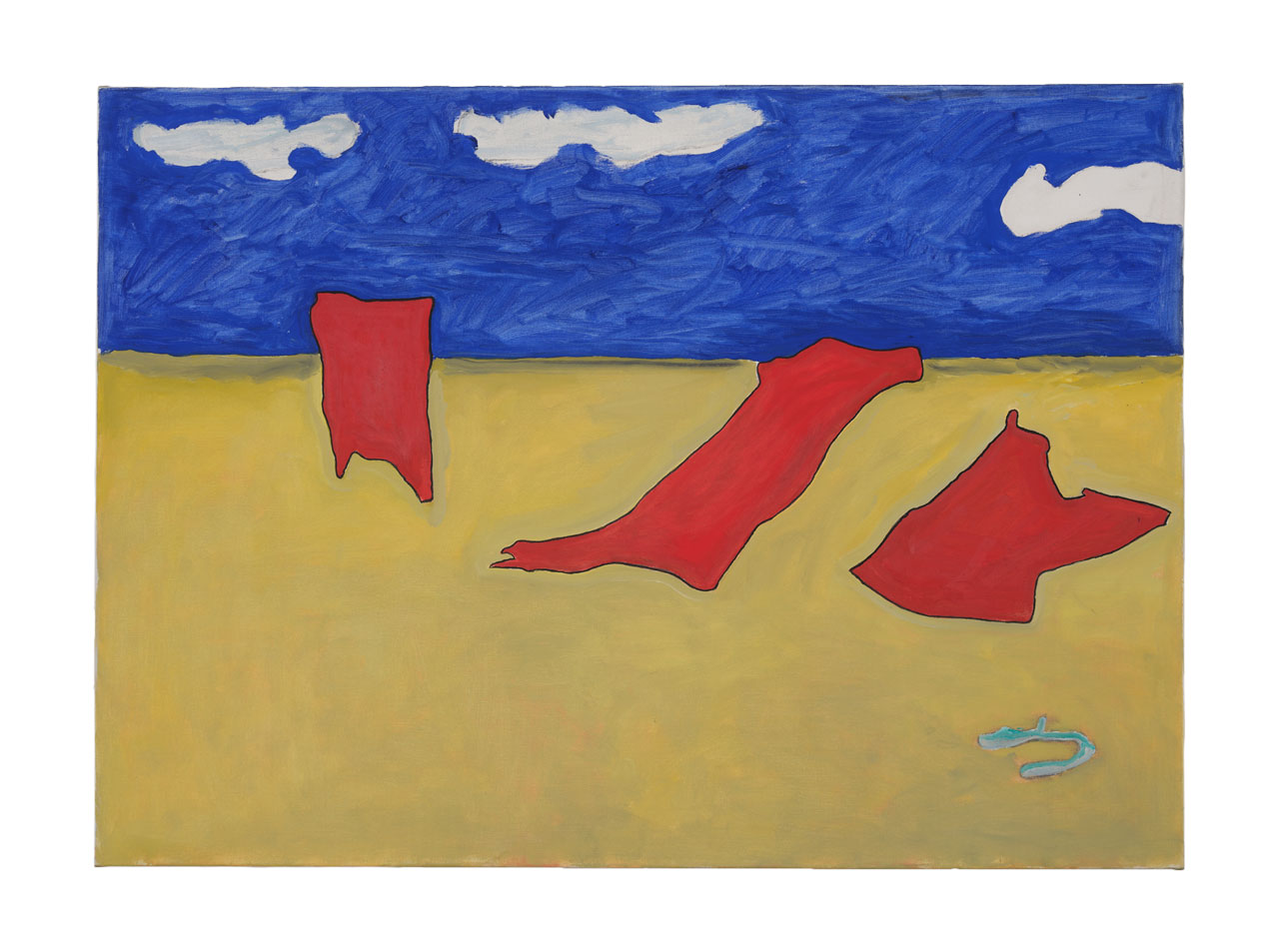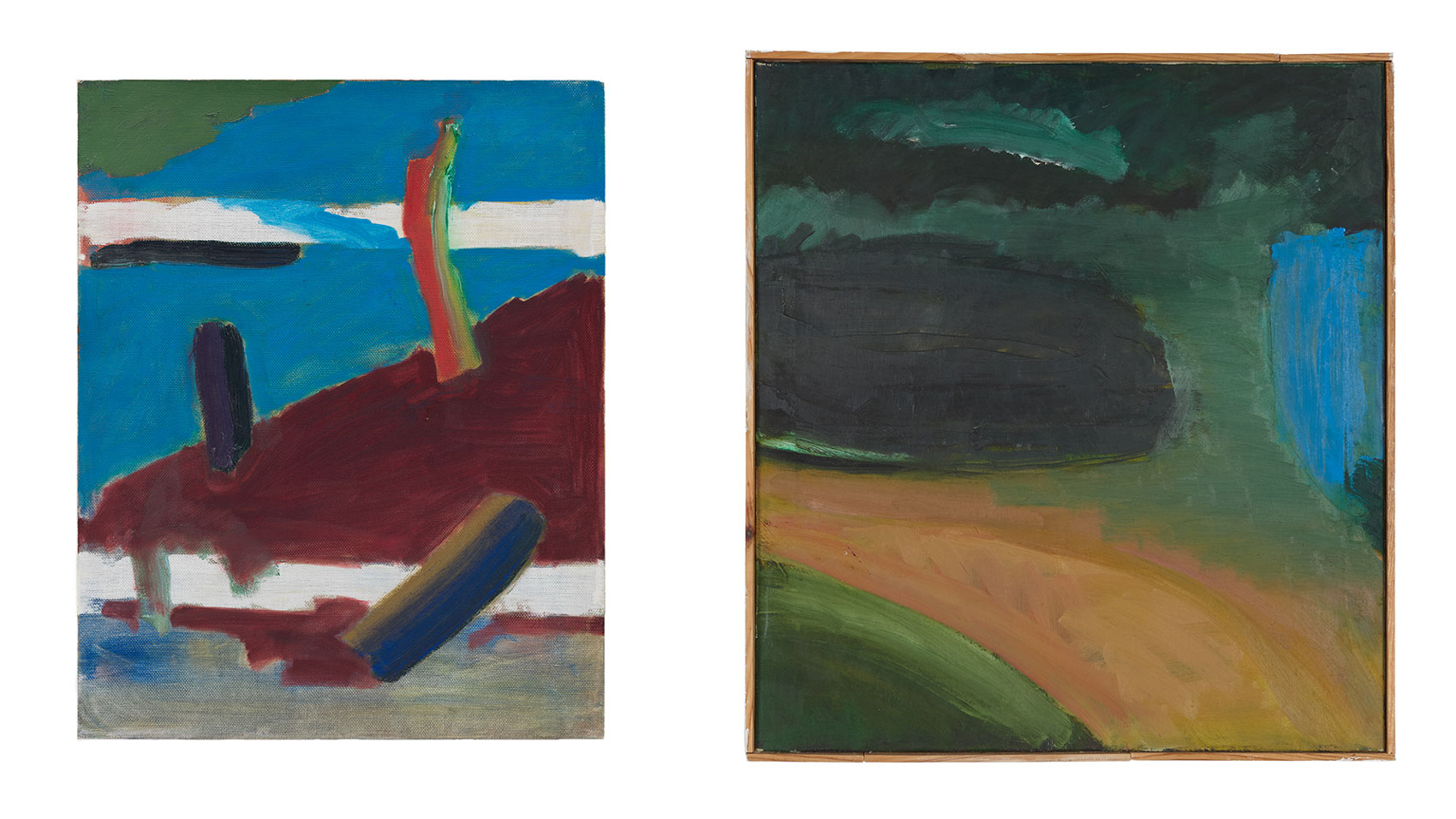ART CITIES:Hong Kong-Raoul de Keyser
 Born in 1930, Raoul de Keyser is one of Europe’s leading painters. In the mid-1960s, he was a member of Nieuwe Visie, a group of painters who sought to reinvigorate certain aspects of European formalism by taking ordinary subjects and reducing them to simple flat shapes and lines. Having exhibited widely since then, de Keyser gained international recognition at Documenta IX in Kassel, Germany in 1992. He is known in Belgium as the father of contemporary painting, and his work has greatly influenced a generation of younger artists such as Tomma Abts, Rebecca Morris, and Luc Tuymans.
Born in 1930, Raoul de Keyser is one of Europe’s leading painters. In the mid-1960s, he was a member of Nieuwe Visie, a group of painters who sought to reinvigorate certain aspects of European formalism by taking ordinary subjects and reducing them to simple flat shapes and lines. Having exhibited widely since then, de Keyser gained international recognition at Documenta IX in Kassel, Germany in 1992. He is known in Belgium as the father of contemporary painting, and his work has greatly influenced a generation of younger artists such as Tomma Abts, Rebecca Morris, and Luc Tuymans.
By Efi Michalarou
Photo: David Zwirner Gallery Archive
The first solo show of Raoul de Keyser’s work in Greater China, the exhibition features paintings from the last twenty-five years of his five-decade career, illustrating his intuitive facility with his medium. The works on view in Hong Kong include key examples of De Keyser’s singularly compelling and distinctive paintings, including works employing hard-edge geometric forms and contrasting colors, such as “Model for Cabinet” (1989), as well as those exhibiting a brushier, looser facture, as in “Front” (1992). Some canvases are rife with overlapping shapes and forms, resulting in visual tension between surface and depth that unfolds over the course of extended periods of viewing. Other paintings are more sparsely populated with semi-uniform shapes—such as ovals—and a restrained palette that highlights the flatness of the support while also creating an indeterminate sense of negative and positive space. A 2010 documentary on De Keyser by Jan Blondeel will also be on view in the gallery, offering visitors an opportunity to further familiarize themselves with the artist’s work and life.
Raoul De Keyser was born and brought up in Deinze, a quiet town on the Leie river in East Flanders. Neither the time nor the place seemed particularly propitious. As a young man in postwar Belgium, De Keyser pursued a reasonably successful career as a journalist, commentating eclectically on sport and art. Much later, he was to draw on these dual interests in his oil painting Ground, begun in 1971, though altered in 1995, in which the plan of a football pitch is reduced to a virtually abstract composition. The title itself seems to refer whimsically not just to the picture’s sporting motif, but also to the integrity of the painted surface, on which the theorists of American abstraction had placed such emphasis during De Keyser’s youth. Although De Keyser first tried painting when young, he took it up seriously only in his 30s, after a brief training at the Academy of Fine Arts in Deinze (1963-64). He swiftly began to introduce his trademark qualities: a debt to American abstract art and an equally strong emphasis on the mundane and banal. These characteristics can be clearly seen, for example, in “Baron in an Al Held Field” (1964-66), a parody of the now almost-forgotten hard-edge painter Al Held, in which streaks of yellow and blue are juxtaposed absurdly with the figure of a puppy. It is as if he was trying to create pop art and abstract expressionism on the same canvas. At the same time, De Keyser joined New Vision, a Flemish movement led by the painter Roger Raveel with the avowed aim of “revaluing everyday reality”. While these intentions would have been worthy of René Magritte, New Vision’s images were anything but surreal. Door handles, tents and garden hoses were to dominate De Keyser’s work, anticipating the walking stick that appeared in his recent exhibition in Berlin – hardly inspiring images, but somehow in accord with the pop-art zeitgeist of the 60s. In general, De Keyser’s emphasis on traditional materials – oil on canvas and watercolour – did not fit in with the conceptual emphasis of the 60s and 70s. By the 1980s, however, a renewed interest in painting helped to promote him: in works such as “Untitled” of 1987, he appears to ask questions about the nature of his art, simply by pushing its boundaries. Can these frontiers include such a rough, untreated canvas on wood? Could such an oddly shaped object really be a painting? De Keyser’s great breakthrough occurred in 1992, when he participated in the Documenta IX show in Kassel, Germany, organised by his compatriot Jan Hoet. This earned De Keyser widespread recognition across Europe and in the US. A decade after his appearance at Documenta, he was rewarded with seminal exhibitions at White Cube and the Whitechapel in London. Throughout his career, De Keyser remained in debt to the heroes of abstract expressionism, even though his work consciously eschewed the large scale of Mark Rothko or Barnett Newman. It does not really pay to compare De Keyser’s fields of colour, or his expressive strokes and splashes, too closely with their American counterparts. Yet his more intimate vision, recently seen in works such as A Failing? (2010) at David Zwirner’s gallery in New York, certainly has its rewards. As well as producing bold, totally non-figurative compositions, De Keyser responded vividly to his environment, abstracting shapes from the monkey puzzle trees outside his window, or from vapour trails, venetian blinds or the corners of walls. His style may at times have seemed derivative, but he had a distinct, uncompromising sensibility. As he said in 2002: “I don’t want to become the ‘pretty’ painter … Ultimately I want to paint ruthlessly.” He resolutely avoided being decorative or ingratiating.
Photo: Raoul De Keyser, Passage (Detail) , 2010, Oil on canvas, 13 1/2 x 17 3/8 inches (34.3 x 44.1 cm), Courtesy David Zwirner Gallery
Info: David Zwirner Gallery, 5-6/F, H Queen’s, 80 Queen’s Road Central, Hong Kong, Duration: 15/1-6/3/21, Days & Hours: Tue-sat 10:00-19:00, www.davidzwirner.com





Right: Raoul De Keyser, Hellepoort 8 (Gates of Hell 8), 1985, Oil on canvas, 19 3/4 x 15 3/4 inches (50 x 40 cm), Courtesy David Zwirner Gallery

Right: Raoul De Keyser, Untitled, 2006, Oil and charcoal on canvas, 16 1/8 x 14 3/8 inches (41 x 36.5 cm), Courtesy David Zwirner Gallery
